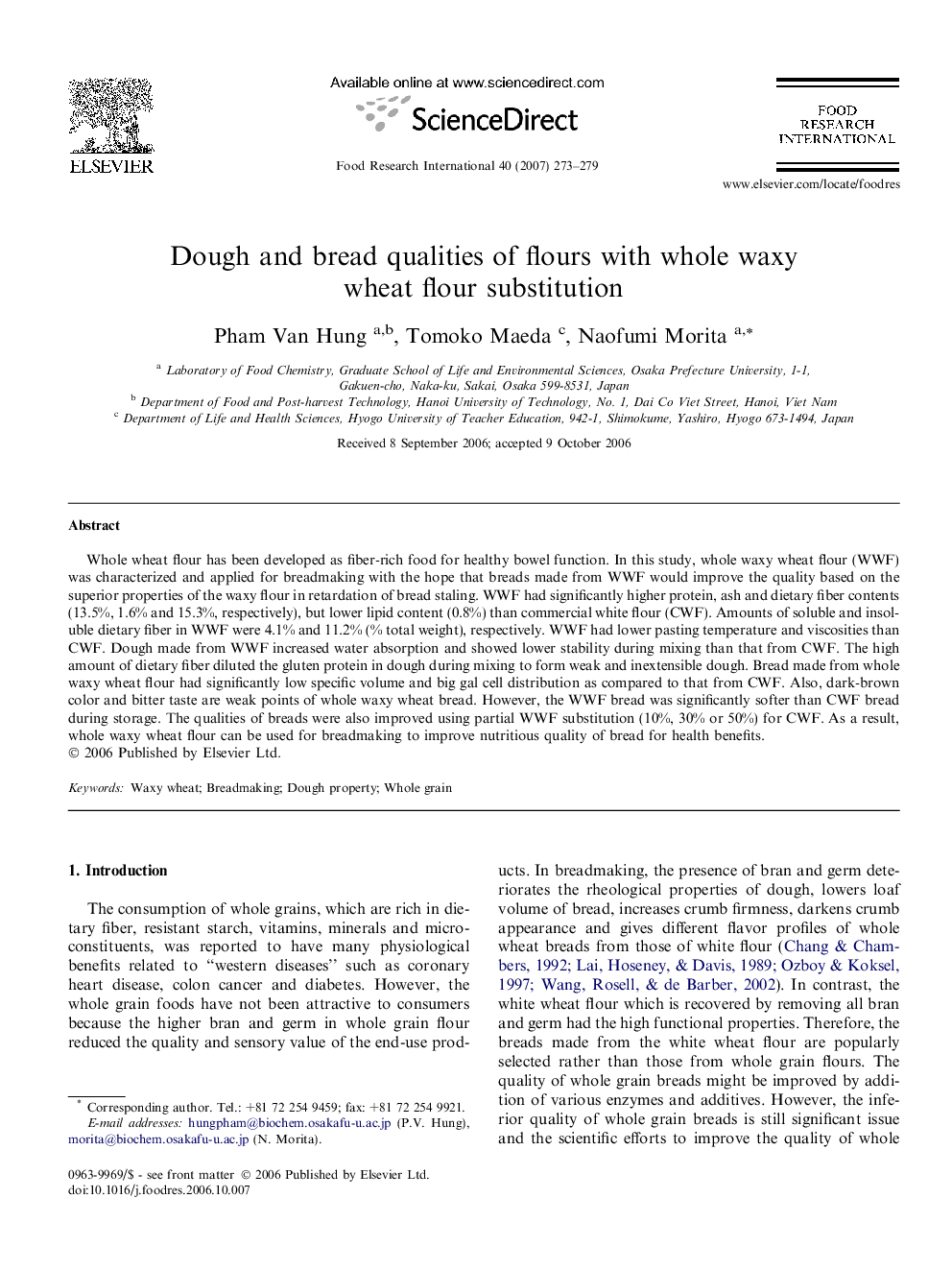| Article ID | Journal | Published Year | Pages | File Type |
|---|---|---|---|---|
| 4563114 | Food Research International | 2007 | 7 Pages |
Whole wheat flour has been developed as fiber-rich food for healthy bowel function. In this study, whole waxy wheat flour (WWF) was characterized and applied for breadmaking with the hope that breads made from WWF would improve the quality based on the superior properties of the waxy flour in retardation of bread staling. WWF had significantly higher protein, ash and dietary fiber contents (13.5%, 1.6% and 15.3%, respectively), but lower lipid content (0.8%) than commercial white flour (CWF). Amounts of soluble and insoluble dietary fiber in WWF were 4.1% and 11.2% (% total weight), respectively. WWF had lower pasting temperature and viscosities than CWF. Dough made from WWF increased water absorption and showed lower stability during mixing than that from CWF. The high amount of dietary fiber diluted the gluten protein in dough during mixing to form weak and inextensible dough. Bread made from whole waxy wheat flour had significantly low specific volume and big gal cell distribution as compared to that from CWF. Also, dark-brown color and bitter taste are weak points of whole waxy wheat bread. However, the WWF bread was significantly softer than CWF bread during storage. The qualities of breads were also improved using partial WWF substitution (10%, 30% or 50%) for CWF. As a result, whole waxy wheat flour can be used for breadmaking to improve nutritious quality of bread for health benefits.
